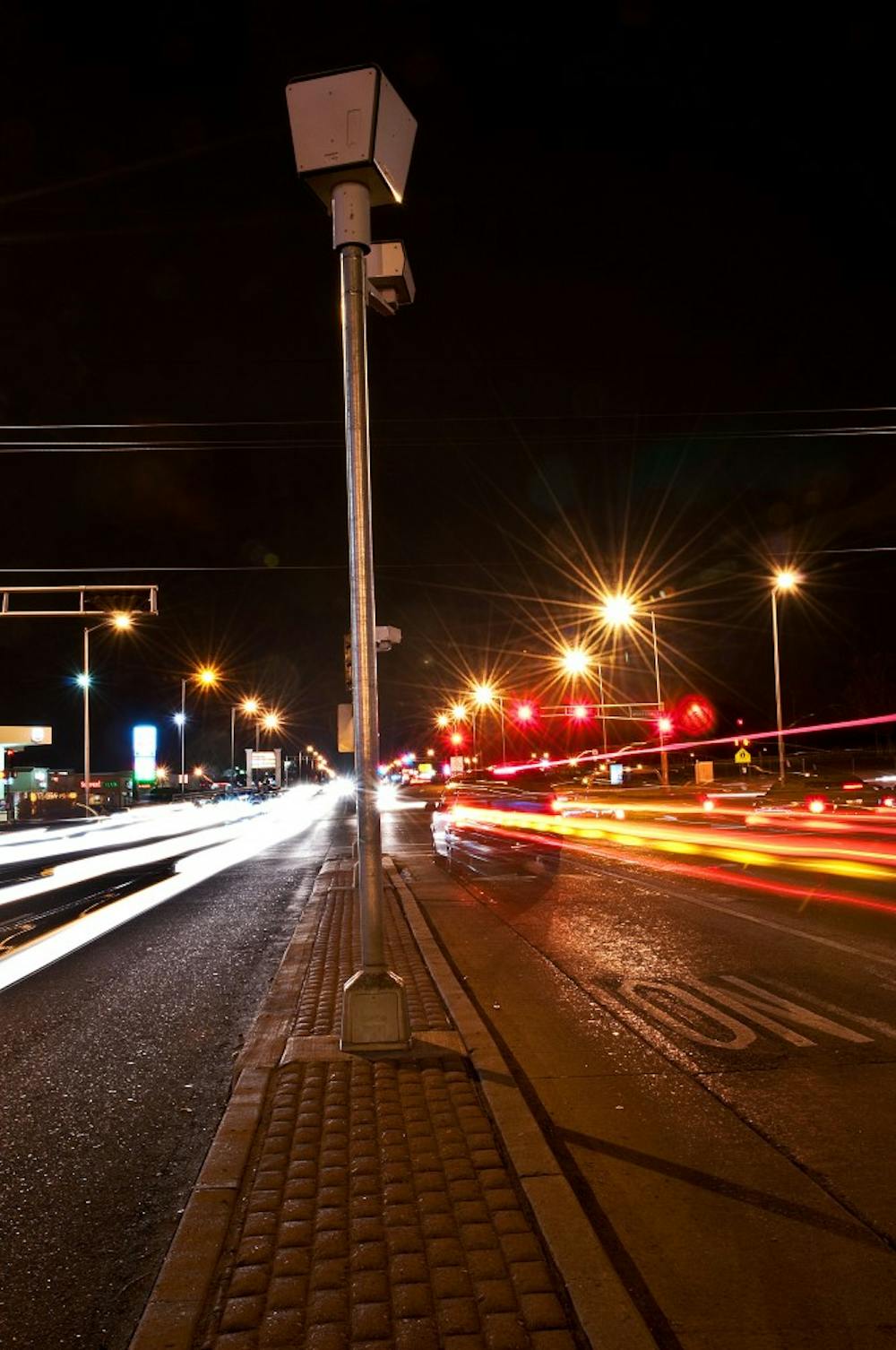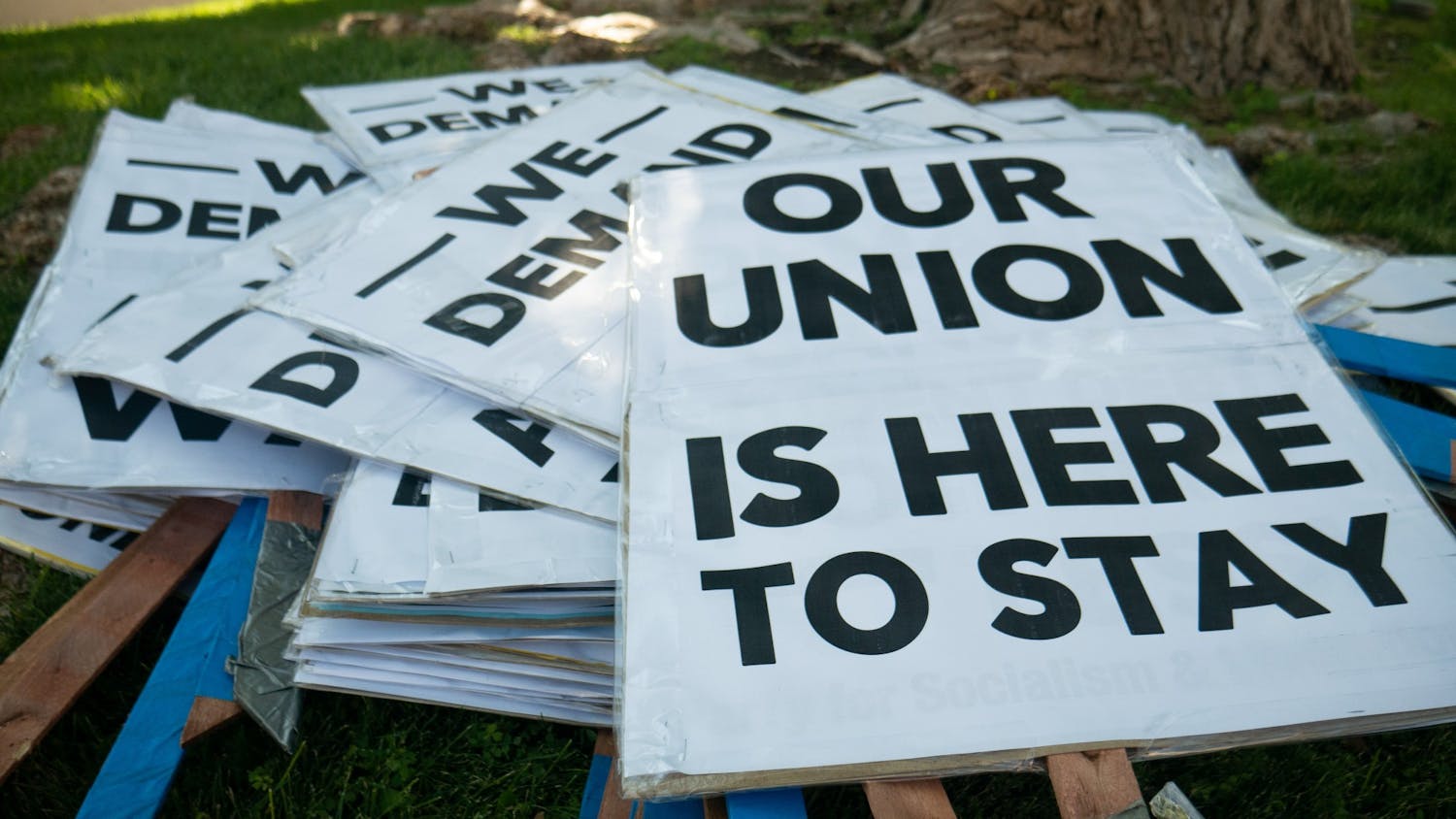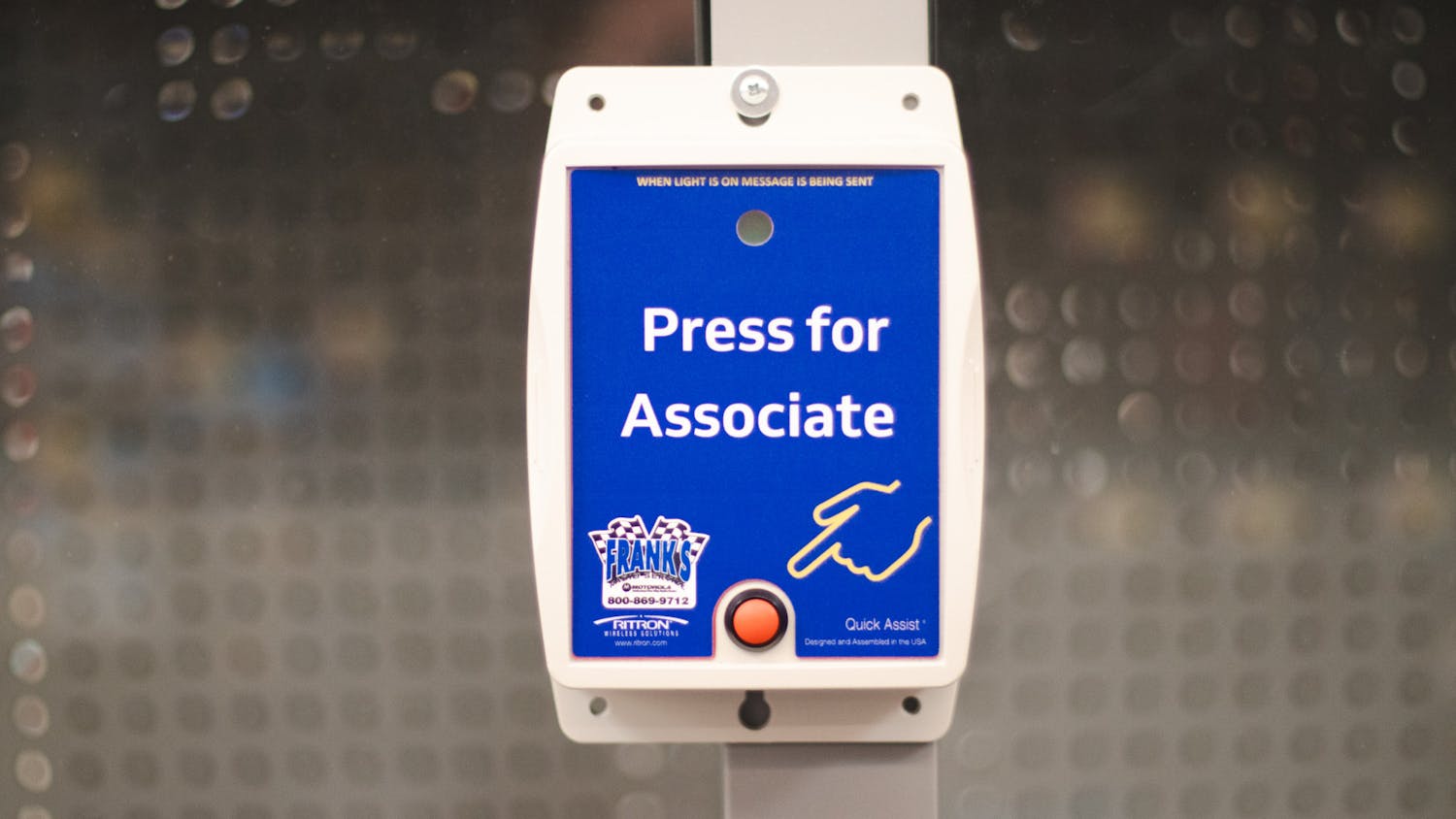If you’ve ever accidentally coasted through a yellow light below a red-light camera, the anxiety you once felt might be a thing of the past.
Albuquerque Mayor Richard Berry is negotiating the terms of a contract with the UNM Institute for Social Research to test whether the cameras actually make Albuquerque’s streets safer.
Berry will decide whether to remove the cameras based on the ISR study, said T.J. Wilham, Albuquerque’s public safety director of communications.
“Mayor Berry has always said that the red-light camera program needs to be about public safety,” Wilham said. “He wants this study to tell him whether or not it is having an impact on public safety.”
The city will not pay more than $50,000 to UNM for doing the study, he said.
Wilham said Berry chose UNM to conduct the study because ISR doesn’t have any personal interest in the outcome.
“They have a very good reputation and the city and the mayor wanted somebody who is not biased — who has a good reputation to conduct the study,” he said. “We feel that UNM’s Social Research was perfect to do that.”
Paul Guerin, senior research scientist at ISR, said the contract will be finalized within the next few weeks.
Wilham said community members have questioned the effectiveness of the lights, and many think the state uses them to generate more revenue. The cameras produced $8 million since their installation in 2004, he said.
“A lot of people did have questions about the camera program — whether or not it was designed just to make money, whether or not there were speed traps, if the yellow lights were timed too short, whether or not we were just targeting wealthy areas,” Wilham said.
According to the city Web site, the Albuquerque Fire Department has seen a 23 percent decrease in Level 1 trauma calls at red-light camera enforced intersections.
Wilham said the city’s biggest goal is addressing safety and public concerns with the cameras.
Graduate student Jakob Schiller said he received two tickets from red-light cameras for speeding.
“I was glad it doesn’t go on your record. It’s just a fine,” Schiller said.
Speeding and running a red-light tickets are a flat $75 fee, according to the city Web site.
Get content from The Daily Lobo delivered to your inbox
He said it is debatable that the cameras increase safety on the roads.
“I think that in a time when all states are strapped for cash, it can be seen as revenue-generating more than safety procedures,” he said. “It makes me slow down at those intersections because I start looking for the red-light cameras.”
UNM’s study will analyze the number of crashes all around the city, not just at intersections with cameras, Wilham said.
If Berry decides that the cameras are ineffective, the contract with red-light camera providers, Redflex Traffic Systems, will not be renewed, he said.






